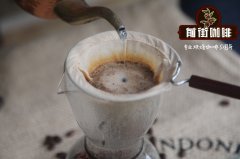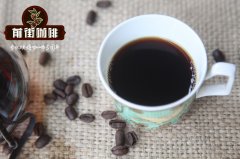Is Mexican decaf really caffeine-free? How is Swiss water treatment decaffeinated?
Mexican Chiapas Swiss Water treatment of decaf
Country of origin: Mexico, Mexico
Producing area: Chiapas Chiapas
Altitude: 900m-1500 m
Variety: bourbon, Kaddura, Tippika, Criollo
Treatment method: Swiss water treatment
Grade: HG
Production season: 2020
Production area introduction
Mexico has 12 major coffee producing areas, of which Chiapas is located in the south of Mexico, near Central America.
The coffee growing base in Chiapas is very strong. Therefore, the state is called the largest coffee producing area in Mexico, and its growers are experienced, enterprising and actively develop boutique coffee cultivation.
Chiapas coffee producing area is about 2500m above sea level, with many volcanoes and rich volcanic soil resources. High altitude and fertile volcanic soil give rise to the smooth taste and comfortable acidity of Chiapas coffee. The coast of Chiapas is affected by the northeast monsoon, with abundant rainfall in summer and rich water resources. So most of the coffee in this area is washed.
This batch of coffee is produced by the GRAPOS Cooperative, a coffee production organization based in the southern Mexican state of Chiapas, which was founded in 2007, when there were only 90 coffee farmers, and by 2016, the cooperative had grown to 3253 coffee farmers, covering the Soconusco, Siltepec, Porvenir and Tapachula sub-areas of Chiapas. GRAPOS coffee planting area of about 5560 hectares, 900-1500m above sea level, mostly small farmers intensive cultivation, per capita planting area of 3 hectares.
Coffee variety
The coffee varieties of this batch of coffee beans are composed of bourbon, Kaddura, iron pickup and Criollo. Iron pickup and bourbon belong to the same ancient Arabica coffee species, which are loved by people for their rich acidity and excellent flavor quality.
Kaddura is a single gene variant of bourbon. It was found in Brazil in 1937 that its production capacity and disease resistance were stronger than those of bourbon species, and the plants were shorter and easier to harvest. Unfortunately, it is the same as bourbon species that have periodic problems of production capacity fluctuation every two years.
Cleo is a natural mutant of the iron pickup, which is commonly found in countries such as Peru, Bolivia, Colombia and Mexico. Some countries in Latin America that grow coffee also call the iron pickup "Criollo". Can be seen as Cleo is a localized tin pickup.
Treatment mode
This batch uses Swiss water treatment decaffeinated technology, this treatment will soak raw coffee beans in hot water, the soaking stage has actually partially removed caffeine. The soaked solution is then filtered with activated carbon and finally poured back into the coffee beans.
This series of steps effectively removes 99.9% of caffeine, and in addition to requiring no use of chemical solvents, the soaked solution can be reused in different batches of treatment procedures.
Raw bean grade
Mexico adopts a raw bean grading system based on hardness. At the same latitude and on the same plot, the higher the altitude, the greater the temperature difference between day and night, the longer the coffee growing period, the harder the beans, the more nutrients absorbed in the beans, the more obvious the flavor substances will be. There will be more raw beans. The grade of this batch is HB (hard bean), and the growth altitude is 1200-1400m.
Baking curve
Test the flavor by cup
Cooking parameters
Filter cup: Kono filter cup
Water temperature: 88.8 ℃
Powder content: 15g
Powder / water ratio: 1:15
Degree of grinding: medium grinding (Chinese standard No. 20 screen pass rate 75%)
Cooking technique: three-stage extraction. Steaming with 30 grams of water for 30 seconds, small water injection around the circle to 125 grams for segments, when the water level is about to expose the powder bed, continue to inject water to 225 grams to stop water injection, and so on when the water level is about to expose the powder bed, remove the filter cup, the cooking time is 3 minutes and 10 seconds.
Important Notice :
前街咖啡 FrontStreet Coffee has moved to new addredd:
FrontStreet Coffee Address: 315,Donghua East Road,GuangZhou
Tel:020 38364473
- Prev

How about Honduran water Kaddura? Introduction of Sanchez Farm in Opalaka production area
Country of origin: Honduras: Opalaka Farm: Finca Wilfredo Sanchez Variety: Kaddura treatment: washing Flavor: black Tea, herbs, Orange, Brown Sugar producing areas introduce the Opalaca Mountains between the arid areas of Intibuca and Lempira. Due to extensive agroforestry management in Opalaca, sufficient humidity can be retained in the
- Next

Is Costa Rican Tara Pearl Honey unique in Coffee processing? La Pasra Manor Huang Mi Kaduai flavor
Country of origin: Costa Rica: Tarazu Farm: Finca La Pastora altitude: 1800m varieties: Kaduai treatment: yellow honey flavor: caramel, peach, succulent Tarazu region is located in the high mountains of the South Pacific to the south of San Jose, Costa Rica, is one of the highest planting densities in Central America, with many farms at 2000 m or more above sea level.
Related
- Detailed explanation of Jadeite planting Land in Panamanian Jadeite Manor introduction to the grading system of Jadeite competitive bidding, Red bid, Green bid and Rose Summer
- Story of Coffee planting in Brenka region of Costa Rica Stonehenge Manor anaerobic heavy honey treatment of flavor mouth
- What's on the barrel of Blue Mountain Coffee beans?
- Can American coffee also pull flowers? How to use hot American style to pull out a good-looking pattern?
- Can you make a cold extract with coffee beans? What is the right proportion for cold-extracted coffee formula?
- Indonesian PWN Gold Mandrine Coffee Origin Features Flavor How to Chong? Mandolin coffee is American.
- A brief introduction to the flavor characteristics of Brazilian yellow bourbon coffee beans
- What is the effect of different water quality on the flavor of cold-extracted coffee? What kind of water is best for brewing coffee?
- Why do you think of Rose Summer whenever you mention Panamanian coffee?
- Introduction to the characteristics of authentic blue mountain coffee bean producing areas? What is the CIB Coffee Authority in Jamaica?

